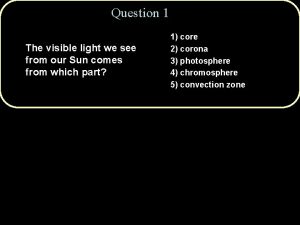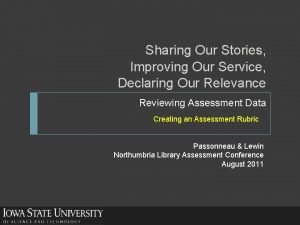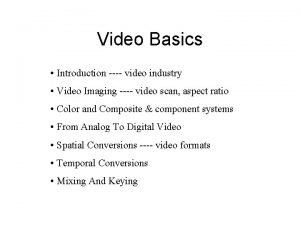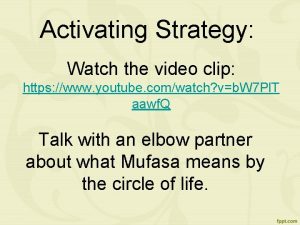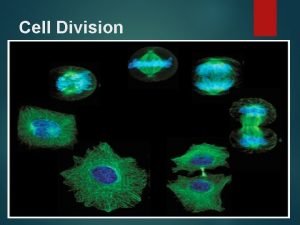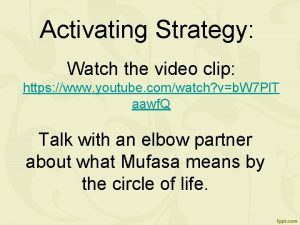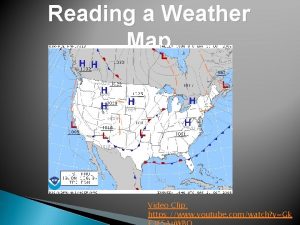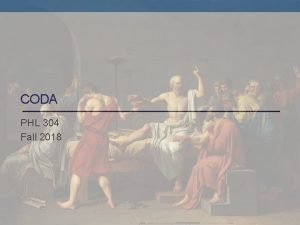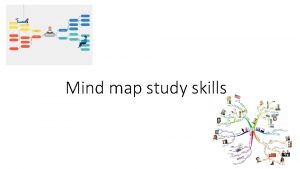Sharing Our Stories Part II Video Clip https






















- Slides: 22

Sharing Our Stories Part II

Video Clip https: //www. youtube. com/watch? v=1 Y 4_Bivnrw. M To play the video, right click on the link and click “Open Hyperlink” or copy and paste the link into your web browser.

Discussion after video: § What did you think of the video? § What emotions did it evoke in you? § What does it tell you about the power of stories?

What is happening in this scene?

“There is no greater agony than bearing an untold story inside you. ” — Maya Angelou

What We Tell Having a Story

“A man is always a teller of tales; he lives surrounded by his stories and the stories of others; he sees everything that happens to him through them, and he tries to live his life as if he were recounting it. ” — Jean-Paul Sartre, Nausea

“Most of us…like to talk about ourselves. Whether because it gives us a sense of power, makes us feel lonely, or meets a myriad of needs at once, most of us appear to benefit from telling others — and, in a sense, ourselves — some portion or version of our personal history. Given the right conditions, often with only the hint of an invitation, most of us welcome the opportunity to pour out part or all of what we tend to think of, with a mixture of both affection and resignation, as the overall “story” of our lives. ” — William L. Randall, The Stories We Are

Storytelling is… 1. Identity-forming 2. Meaning-making 3. Community-creating 4. Knowledge-generating 5. Intrinsically empowering

What We Create Being a Story

Self-Creation § We continually organize and reorganize — how we story and re-story — both ourselves and our world. § The way we story our lives directly affects the way we understand ourselves; the way we understand ourselves directly affects the way we act; and the way we act directly affects the way the world is. — William L. Randall, The Stories We Are

Narrative Theory § Selfhood is created in story form. § A person’s sense of self develops out of the stories through which he or she interprets experience. § These stories collect both the remembered past and the imagined future, which are then integrated into the person’s present identity. § Future stories of hope are essential to healing, reconciliation, and renewal of self. — Andrew D. Lester, Hope in Pastoral Care and Counseling

Narrative Pastoral Care Process Knowing and owning my story Attending to the other’s story Helping the other find a future story

Knowing and Owning My Story Where’s my family? Where’s my love? Where’s my joy? Where’s my pain? Where’s my God? Where’s my hope/dream? Where’s my faith?

Providing Care Step 1 - Awareness § As you care for others, having an awareness of your own emotions is essential. § Also important is having awareness of how you do with others with similar stories. – Do their stories of pain trigger pain in you or remind you of how you have suffered in the past? – Perhaps they are grieving and their grief triggers your grief about something in your life.

Step 2 – Having a Plan § Not about me, but about the other’s story § Not letting my pain get in the way of honoring the other’s story § Not carrying the burden all by myself — I can make a referral to a chaplain § Being intentional about boundaries

Step 3 – Visitation § Maintain a “not-knowing” posture — be genuinely curious. § Allow the story to emerge — do not interfere or intervene needlessly. § Remember, “It’s not about me. ” § Prayerfully conduct the conversation – Consider WAIT (Why Am I Talking? ). § Affirm the emotions, honor the intentions. § Thank the person for sharing the story and communicate the positive impact it has had on you.

Step 4 – Analysis/Reflection § Was I present fully? Faithfully? § Was I in tune with the Spirit? § Did I listen to the story? Did I honor the other? § How do I feel now? Good? Sad? Frustrated? § What was my anxiety level? Did I deal with it constructively? § What can I learn? What can I do better? § How can I attend to myself? Do I need to talk to someone?

Assignment – Your Story Who is one person in your life who has modeled what it looks like to provide good spiritual/ pastoral care? How did he/she model it? § Write your name, your faith tradition, and the number of years you have been in that tradition. § 1 page (typed), 12 pt. font, double-spaced § Due in one week

What We Are Trying To Do in a Nutshell… § Many have Stories that Are Stuck. § But the Story could be unstuck. § So that a new Plot could take shape. § All it needs is someone to listen to it, hold it in confidence, respect it, and bless it.

§ Milton H. Erickson — "I'll Go Swimming Tomorrow" excerpt from In The Room with Milton Erickson § https: //www. youtube. com/watch? v=d. IAgt. D 5 OX 9 k

Sources Painting on Slide 3: “Die Marchenerzahlerin” by Franz Von Defregger Lester, Andrew D. Hope in Pastoral Care and Counseling. Louisville: Westminster John Knox Press, 1995. Randall, William L. The Stories We Are: An Essay on Self- Creation. Toronto: University of Toronto Press, 1995.
 Videos yandex 2020
Videos yandex 2020 Yahoo gravity
Yahoo gravity Video.search.yahoo.com
Video.search.yahoo.com Digital media primer
Digital media primer Thinking affects our language, which then affects our:
Thinking affects our language, which then affects our: Our census our future
Our census our future Words to christ be our light
Words to christ be our light Our life is what our thoughts make it
Our life is what our thoughts make it We bow our hearts
We bow our hearts Our census our future
Our census our future Our life is what our thoughts make it
Our life is what our thoughts make it Money madness was published in the collection
Money madness was published in the collection Awareness of ourselves and our environment is
Awareness of ourselves and our environment is Our awareness of ourselves and our environment.
Our awareness of ourselves and our environment. God our father christ our brother
God our father christ our brother Our future is in our hands quotes
Our future is in our hands quotes Our awareness of ourselves and our environment
Our awareness of ourselves and our environment Awareness of ourselves and our environment is:
Awareness of ourselves and our environment is: En islcollective
En islcollective Yandex.ru video
Yandex.ru video Kaltura utsc
Kaltura utsc Enlace: https://www.youtube.com/watch?v=vdrwgzgayrk
Enlace: https://www.youtube.com/watch?v=vdrwgzgayrk The visible light we see from our sun comes from which part
The visible light we see from our sun comes from which part






















